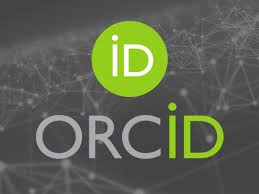Risk factors for moderate to severe migraine disability
Keywords:
risk factors, migraine disorders, sleep wake disorders, case-control studies, nausea, anxiety.Abstract
Introduction: migraine is the seventh cause of work, domestic and social disability in the world and is the main cause of disability among neurological conditions. Factors associated with the degree of migraine disability have been little studied.
Objective: to identify risk factors with independent influence on moderate to severe migraine disability.
Method: a case-control study was conducted in patients with migraine. The sample size was calculated using the EpiDat 3.0 program. The final sample consisted of 104 patients with moderate to severe disability (cases) and 208 patients with mild to moderate disability (controls).
Results: it was observed that the frequency of days with headaches in the previous three months increased the risk of moderate to severe disability by more than 24 times (OR- 24.24; 95 % CI- 8.10-72.46), have associated other patterns of headache almost doubled the risk (OR- 9.04; 95 % CI- 3.75-21.80) and having a poor sleep quality increased sextupled (OR- 6.06; 95 % CI- 2.29-16.06). Moderate or intense phonophobia (OR- 4.99; 95 % CI- 2.06-12.09); frequent nausea (OR 3.24 95% CI 1.29-8.11); pathological anxiety (OR- 3.06; 95 % CI- 1.28-7.34); the abuse of analgesics (OR- 2.95 95 % CI- 1.26-6.88 and depression (OR- 2.79; 95 % CI- 1.09-7.21) also behaved as risk factors.
Conclusions: the most important independent influencing risk factors for moderate to severe migraine disability were the frequency of headaches, associated headache patterns, poor sleep quality, and moderate or severe phonophobia.
Downloads
References
1. Steiner TJ, Stovner LJ, Birbeck GL. Migraine: The seventh disabler. Cephalalgia. 2013; 33(5): 289-90. doi: 10.1177/0333102412473843.
2. Berra E, Sances G, De Icco R, Avenali M, Berlangieri M, De Paoli I, et al. Cost of Chronic and Episodic Migraine: a pilot study from a tertiary headache centre in northern Italy. J Headache Pain [Internet]. 2015 [citado 20 Dic 2016]; 16: 50-8. Disponible en: https://www.ncbi.nlm.nih.gov/pmc/articles/PMC4460116/.
3. Ayuso Mateosa JL, Nieto Moreno M, Sánchez Moreno J, Vázquez Barquerod JL. Clasificación internacional del funcionamiento, la discapacidad y la salud (CIF): aplicabilidad y utilidad en la práctica clínica. The Med Clin (Barc). [Internet]. 2006 [citado 20 Dic 2016]; 126(12): 461-6. Disponible en: http://sid.usal.es/idocs/F8/ART13069/clasificacion_internacional_del_funcionamiento.pdf
4. Baigi K, Stewart WF. Headache and migraine: a leading cause of absenteeism [Internet]. En: Lotti M, Bleecker ML, eds. Handbook of Clinical Neurology. [s.n.]: Elsevier; 2015. Vol. 131.p. 447-63. (3rd series). Disponible en: http://www.sciencedirect.com/science/article/pii/B9780444626271000251?via%3Dihub.
5. Quesada Vázquez AJ, Contreras Maure LJ, Pérez Joa AS, Mendoza Acosta O, Álvarez Aliaga A, Frómeta Guerra A. Prevalencia y características clínico epidemiológicas de la migraña en Bayamo. Multimed [Internet]. 2017 [citado 14 Ago 2017]; 21(4): 414-29. Disponible en: http://www.revmultimed.sld.cu/index.php/mtm/article/download/557/914
6. Headache Classification Subcommittee of the IHS. The internacional classification of headache disorders, 2nd ed. Cephalalgia [Internet]. 2004 [citado 21 Nov 2005]; Suppl 1:S24. Disponible en: http://journals.sagepub.com/toc/cepa/24/1_suppl.
7. Lipton RB, Steward WF, Sawyer J, Edmeads JG. Clinical utility of an instrument assessing migraine disability. The Migraine Disability Assessment (MIDAS) questionnary. Headache [Internet]. 2001 [citado 10 Ene 2016]; 41:854-61. Disponible en: http://onlinelibrary.wiley.com/doi/10.1111/j.1526-4610.2001.01156.x/pdf.
8. Gonzáles Llaneza FM. Instrumentos de evaluación psicológica. [Internet]. La Habana: Editorial de Ciencias Médicas; 2007 [citado 20 Oct 2016]. Disponible en: http://www.bvs.sld.cu/libros_texto/ins-eva-psicol/completo.pdf.
9. Luna Solis Y, Robles Arana Y, Agüero Palacios Y. Validación del Índice de Calidad de Sueño de Pittsburgh en una muestra peruana. Anales de Salud Mental [Internet]. 2015 [citado 11 Nov 2016]; XXXI (2):23-30. Disponible en: http://www.insm.gob.pe/ojsinsm/index.php/Revista1/article/download/15/14.
10. Shaik MM, Hassan NB, Tan HL, Gan SH. Quality of life and migraine disability among female migraine patients in a tertiary hospital in Malaysia. Biomed Res Int [Internet]. 2015 [citado 30 Dic 2016]; 2015: 523717. Disponible en: https://www.hindawi.com/journals/bmri/2015/523717/.
11. Wang SJ, Wang PJ, Fuh JL, Peng KP, Nq K. Comparisons of disability, quality of life, and resource use between chronic and episodic migraineurs: A clinic-based study in Taiwan. Cephalalgia. 2013; 33(3):171–81. doi: 10.1177/0333102412468668.
12. Hubbard CS, Becerra L, Smith JH, DeLange JM, Smith RM, Black DF, et al. Brain changes in responders vs. non-responders in chronic migraine: markers of disease reversal. Front Hum Neurosci [Internet]. 2016 [citado 30 Ene 2017]; 10:497. disponible en: http://journal.frontiersin.org/article/10.3389/fnhum.2016.00497/full.
13. Foote HW, Hamer JD, Roland MM, Landy SR, Smitherman TA. Psychological flexibility in migraine: A study of pain acceptance and values-based action. Cephalalgia. 2016; 36(4):317–24. doi: 10.1177/0333102415590238.
14. Vetvik KG, Benth JS, MacGregor EA, Lundqvist C, Russell MB. Menstrual versus non-menstrual attacksof migraine without aura in women with and without menstrual migraine. Cephalalgia. 2015; 35(14):1261–8. Doi: 10.1177/0333102415575723.
15. Bakar NA, Tanprawate S, Lambru G, Torkamani M, Jahanshahi M, Matharu M. Quality of life in primary headache disorders: a review. Cephalalgia. 2016; 36(1): 67–91. doi: 10.1177/0333102415580099.
16. Cámara Lemarroy CR, Rodriguez Gutierrez R, Monreal Robles R, Marfil Rivera A. Gastrointestinal disorders associated with migraine: A comprehensive review. World J Gastroenterol [Internet]. 2016 [citado 30 Ene 2017]; 22(36):8149-60. Disponible en: https://www.wjgnet.com/1007-9327/full/v22/i36/8149.htm.
17. Russo AF. Calcitonin Gene-Related Peptide (CGRP): A new target for migraine. Annu Rev Pharmacol Toxicol. [Internet]. 2015 [citado 30 Dic 2016]; 55:533–552. Disponible en: https://doi.org/10.1146/annurev-pharmtox-010814-124701.
18. Garza I, Schwedt TJ, Robertson CE, Smith JN. Headache and Other Craniofacial Pain. En: Daroff RB, Mazziotta JC, Jankovic J, Pomeroy SL, eds. Bradley’s Neurology in Clinical Practice, 7th ed. [Internet]. Philadelphia: Saunders Elsevier; 2016. p. 1686-1719 [citado 10 Dic 2016]. Disponible en: https://www.clinicalkey.es/#!/content/book/3-s2.0-B9780323287838001034.
19. Dikmen PY, Yavuz BG, Aydinlar EI. The relationships between migraine, depression, anxiety, stress, and sleep disturbances. Acta Neurol Belg [Internet]. 2015 [citado 10 Dic 2016]; 115: 117–22. Disponible en: https://link.springer.com/article/10.1007%2Fs13760-014-0312-0.
20. Walters AB, Hamer JD, Smitherman TA. Sleep disturbance and affective comorbidity among episodic migraineurs. Headache [Internet]. 2014 [citado 10 Ene 2016]; 54 (1):116-24. Disponible en: http://onlinelibrary.wiley.com/doi/10.1111/head.12168/pdf.
21. Holland PR. Headache and sleep: Shared pathophysiological mechanisms. Cephalalgia. 2014; 34(10):725–44. doi: 10.1177/0333102414541687.
22. de Tommaso M, Delussi M, Vecchio E, Sciruicchio V, Invitto S, Livrea P. Sleep features and central sensitization symptoms in primary headache patients. J Headache Pain [Internet]. 2014 [citado 30 Dic 2016]; 15: 64. Disponible en: https://link.springer.com/article/10.1186/1129-2377-15-64.
23. Aurora ShK, Brin MF. Chronic migraine: an update on physiology, imaging, and the mechanism of action of two available pharmacologic therapies. Headache [Internet]. 2017 [citado 30 Dic 2016]; 57(1):109-25. Disponible en: http://onlinelibrary.wiley.com/doi/10.1111/head.12999/pdf.
24. Neves Da Silva A, Lake III AE. Clinical Aspects of Medication Overuse Headaches. Headache [Internet]. 2014 [citado 10 May 2016]; 54(1): 211-7. Disponible en: http://onlinelibrary.wiley.com/doi/10.1111/head.12223/full.
25. Ashina S, Bendtsen L, Lyngberg AC, Lipton RB, Hajiyeva N, Jensen R. Prevalence of neck pain in migraine and tension-type headache: A population study. Cephalalgia. 2015; 35(3):211–9. doi: 10.1177/0333102414535110.
26. Minen MT, Loder E, Tishler L, Silbersweig D. Migraine diagnosis and treatment: a knowledge and needs assessment among primary care providers. Cephalalgia. 2016; 36(4):358–70. doi: 10.1177/0333102415593086.

Downloads
Published
How to Cite
Issue
Section
License
Avisos de derechos de autor propuestos por Creative Commons
1. Política propuesta para revistas que ofrecen acceso abierto
Aquellos autores/as que tengan publicaciones con esta revista, aceptan los términos siguientes:- Los autores/as conservarán sus derechos de autor y garantizarán a la revista el derecho de primera publicación de su obra, el cuál estará simultáneamente sujeto a la Licencia de reconocimiento de Creative Commons que permite a terceros compartir la obra siempre que se indique su autor y su primera publicación esta revista.
- Los autores/as podrán adoptar otros acuerdos de licencia no exclusiva de distribución de la versión de la obra publicada (p. ej.: depositarla en un archivo telemático institucional o publicarla en un volumen monográfico) siempre que se indique la publicación inicial en esta revista.
- Se permite y recomienda a los autores/as difundir su obra a través de Internet (p. ej.: en archivos telemáticos institucionales o en su página web) antes y durante el proceso de envío, lo cual puede producir intercambios interesantes y aumentar las citas de la obra publicada. (Véase El efecto del acceso abierto).






